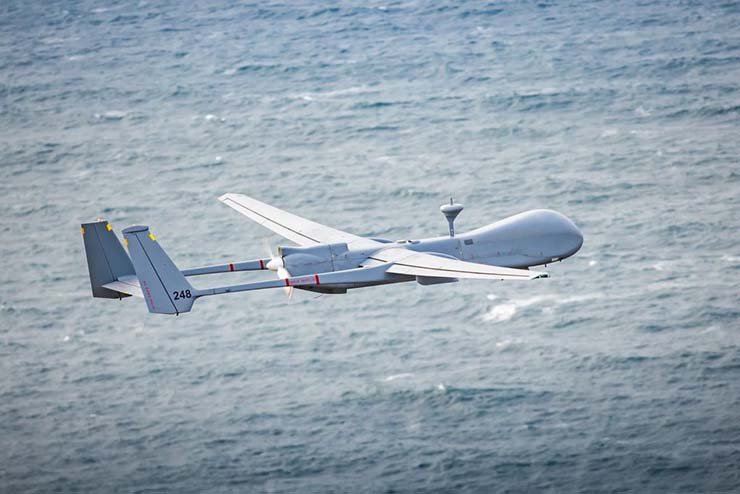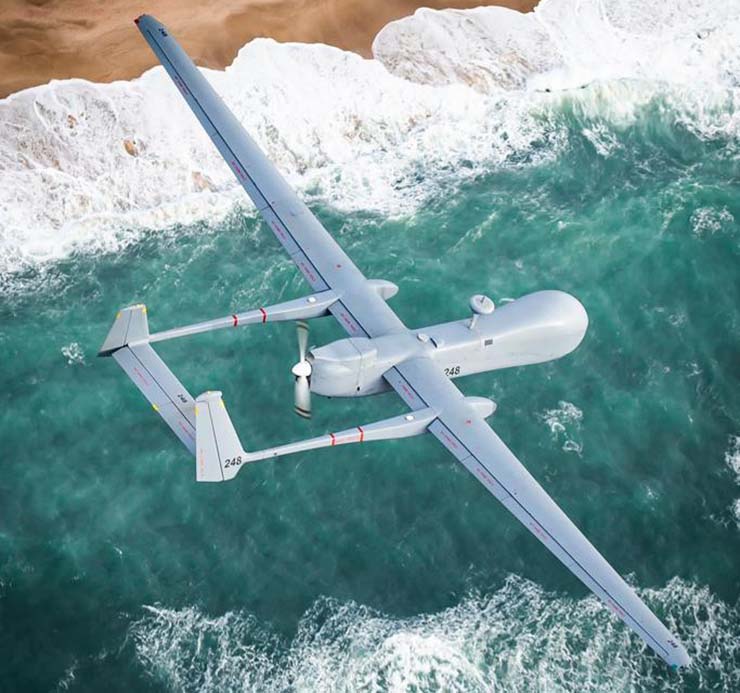
Tel Aviv: Israeli developed AI technologies will enhance the capabilities of Israel Aerospace Industries (IAI) made UAV in performing maritime missions.
IAI and Israeli company Windward have signed a teaming agreement that will provide the maritime community with enhanced autonomy and Artificial Intelligence (AI) capabilities through the use of persistent surveillance unmanned aerial systems (UAS).
The newly-integrated capability will utilise Windward’s AI technology as part of the Heron system. This combination provides users with the ability to enhance open-source maritime data with AI-driven insights to quickly identify anomalies from patterns of life and suspicious vessel behaviour to calculate the level of risk. It will enable true tipping and cueing operations by sifting through thousands of targets and winnowing them down quickly to the relevant few, reducing the number of personnel and assets required to do so.
IAI’s Mission Management System will gathe0r the Windward outputs, and along with the real-time sensor data from the UAS will automatically filter out cleared targets using the system’s rules engine and the customers’ pre-defined mission requirements.

“Teaming with Windward and integrating their AI capabilities into the Heron system is another leap forward in our endeavours to increase the operational efficiency of our naval customers,” says Meir Shabtai, VP & GM MALAT Division. “Our customers have limited resources and are responsible for covering huge areas. The Maritime Heron, integrated with Windward’s software, is a force-multiplier that will increase Maritime Domain Awareness, while reducing the time needed for actionable intelligence, as well as reducing operating costs.”
Matan Peled, Windward Co-Founder and Head of US Business said, “We are proud that the IAI has chosen Windward as its partner to enhance the Heron system with our unique Maritime AI Insights. There is a data overload in the maritime domain and simply too much area to cover. Now users will have the ability to enhance tipping and cueing operations, deploy their assets with precision, and give them the tools and visibility they need to secure their borders more effectively, efficiently, and in a considerably shorter window of time.”















